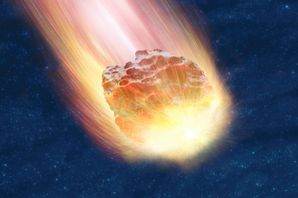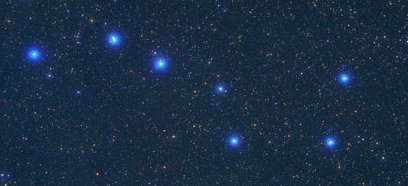Space Quiz For Grade 6

Are you ready for this space quiz for grade 6? Go ahead then. Outer space is the expanse that exists beyond Earth and between celestial bodies. Outer space is not completely empty—it is a hard vacuum containing a low density of particles. Learn more with this quiz, and also get an opportunity to test your current understanding of the subject. Best of luck to you, and have fun! Let's go for this quiz!
- 1.
What is the third phase of the moon?
- A.
FIRST-QUARTER
- B.
FULL MOON
- C.
WAXING CRESCENT
- D.
NONE OF THE ABOVE
Correct Answer
A. FIRST-QUARTERExplanation
The first-quarter phase of the moon occurs when the moon is halfway between a new moon and a full moon. During this phase, the moon appears as a half-circle shape, with the right side illuminated. This phase marks the beginning of the waxing (growing) phase of the moon's cycle. It is called the first-quarter because it is the first quarter of the moon's journey from new moon to full moon.Rate this question:
-
- 2.
What is the nearest planet to the Sun?
- A.
Jupiter
- B.
Saturn
- C.
Mercury
- D.
The Earth
Correct Answer
C. MercuryExplanation
Mercury is the correct answer because it is the nearest planet to the Sun. Being the closest planet, it has an average distance of about 36 million miles from the Sun. This proximity to the Sun also means that Mercury has a very short year, taking only about 88 Earth days to complete one orbit around the Sun. Additionally, Mercury has extreme temperature variations due to its close proximity to the Sun, with temperatures reaching up to 800 degrees Fahrenheit during the day and dropping to -290 degrees Fahrenheit at night.Rate this question:
-
- 3.
What are the 3 sections of the sky called?
- A.
Northern, Southern, and in the middle
- B.
Northern, Equatorial, and Southern
- C.
North, East, and South
- D.
All of the above
Correct Answer
B. Northern, Equatorial, and SouthernExplanation
The three sections of the sky are referred to as Northern, Equatorial, and Southern. This categorization is based on the location of celestial objects in relation to the Earth's equator. The Northern section includes the sky above the northern hemisphere, the Equatorial section covers the sky along the Earth's equator, and the Southern section encompasses the sky above the southern hemisphere.Rate this question:
-
- 4.
How many inner planets are there?
- A.
3
- B.
5
- C.
9
- D.
4
Correct Answer
D. 4 -
- 5.
There are 4 stages to meteoroids.
- A.
True
- B.
False
Correct Answer
B. FalseExplanation
The statement "There are 4 stages to meteoroids" is false. Meteoroids do not have stages. A meteoroid is a small rocky or metallic object that travels through space. When it enters the Earth's atmosphere, it becomes a meteor and produces a streak of light in the sky. If it survives the journey through the atmosphere and lands on Earth's surface, it is called a meteorite. Therefore, there are only three stages associated with meteoroids: meteoroid, meteor, and meteorite.Rate this question:
-
- 6.
What is a meteor?
- A.
A meteor is a rock that is moving through space.
- B.
A meteor is a rock from space that comes on Earth's atmosphere.
- C.
A meteor is a rock from space that comes into Earth and makes a crater into Earth's ground.
- D.
A meteor is a rock
Correct Answer
B. A meteor is a rock from space that comes on Earth's atmosphere.Explanation
A meteor is a rock from space that comes on Earth's atmosphere. This explanation correctly defines a meteor as a rock from space that enters Earth's atmosphere. When a meteor enters the Earth's atmosphere, it heats up and produces a streak of light known as a meteor or shooting star.Rate this question:
-
- 7.
What is a constellation?
- A.
A constellation is a picture from space.
- B.
A constellation is a group of stars.
- C.
A constellation is a group of stars that form a picture.
- D.
A constellation is pictured with astronauts in them.
Correct Answer
C. A constellation is a group of stars that form a picture.Explanation
A constellation is a group of stars that form a picture. This means that when we look at a group of stars in the night sky, we can connect the dots and see a recognizable shape or pattern. These patterns have been named and recognized by different cultures throughout history, and they help us navigate and understand the night sky. The stars in a constellation may not actually be physically close to each other, but they appear close to each other from our perspective on Earth.Rate this question:
-
- 8.
There is a camera on the spacesuit
- A.
True
- B.
False
Correct Answer
A. TrueExplanation
The statement "There is a camera on the spacesuit" is true. This means that there is a camera installed on the spacesuit, allowing astronauts to capture images and videos of their surroundings while they are in space. This camera is essential for various purposes, including scientific research, documentation, and communication with ground control. It helps provide visual information and enhances the overall understanding of space missions.Rate this question:
-
- 9.
If you were to make up your own constellation, what would it be?
- A.
A flower
- B.
An animal
- C.
A person
- D.
Other
Correct Answer(s)
A. A flower
B. An animal
C. A person
D. OtherExplanation
This question is asking the respondent to choose what type of constellation they would create if given the opportunity. The options provided are a flower, an animal, a person, or other. The correct answer is any of the options listed, as the question is open-ended and allows for personal creativity and imagination in designing their own constellation.Rate this question:
-
Quiz Review Timeline +
Our quizzes are rigorously reviewed, monitored and continuously updated by our expert board to maintain accuracy, relevance, and timeliness.
-
Current Version
-
Nov 13, 2024Quiz Edited by
ProProfs Editorial Team -
Nov 26, 2017Quiz Created by
Sammy
- Aeronautics Quizzes
- Aerospace Quizzes
- Agricultural Science Quizzes
- Astrology Quizzes
- Astronomy Quizzes
- Atom Quizzes
- Biochemistry Quizzes
- Biology Quizzes
- Biomechanics Quizzes
- Biostatistics Quizzes
- Biotechnology Quizzes
- Botany Quizzes
- Branches Of Science Quizzes
- Chemistry Quizzes
- Cytology Quizzes
- Easy Science Quizzes
- Ecology Quizzes
- Electrical Quizzes
- Embryology Quizzes
- Endocrinology Quizzes
- Engineering Quizzes
- Environmental Science Quizzes
- Epidemiology Quizzes
- Experiment Quizzes
- Forestry Quizzes
- Fossil Quizzes
- Gas Quizzes
- General Science Quizzes
- Genetics Quizzes
- Histology Quizzes
- Human Biology Quizzes
- Integrated Science Quizzes
- Invention Quizzes
- Library Science Quizzes
- Lighting Quizzes
- Liquid Quizzes
- Marine Biology Quizzes
- Microbiology Quizzes
- Molecular Biology Quizzes
- Nature Quizzes
- Neuroscience Quizzes
- Nuclear Science Quizzes
- Oceanography Quizzes
- Physics Quizzes
- Psychology Quizzes
- Science And Technology Quizzes
- Science Glossary Quizzes
- Science Knowledge Quizzes
- Science Practice Quizzes
- Scientific Method Quizzes
- Scientific Notation Quizzes
- Soil Science Quizzes
- Solar System Quizzes
- Solid Quizzes
- Toxicology Quizzes
- Zoology Quizzes
 Back to top
Back to top







